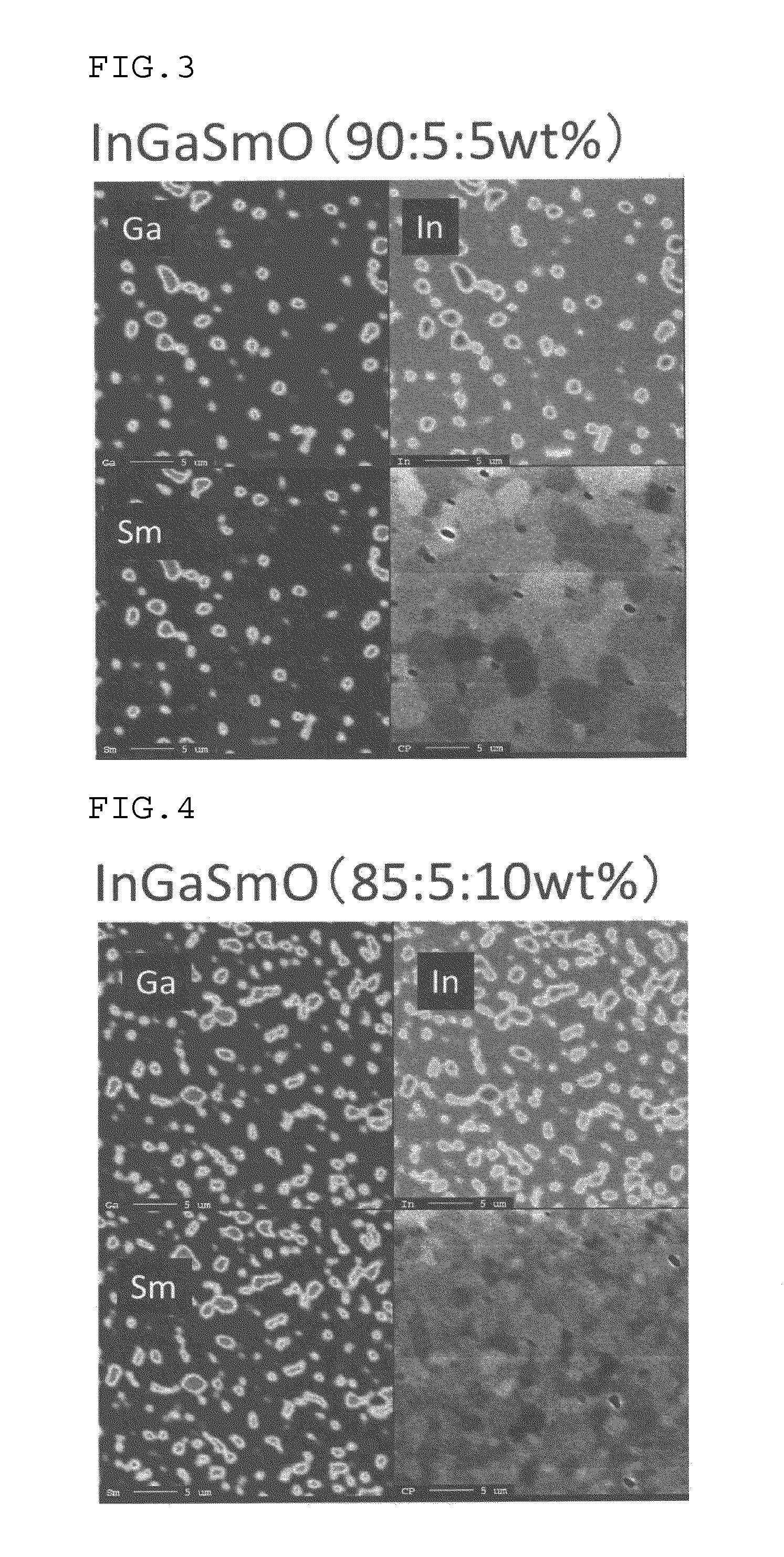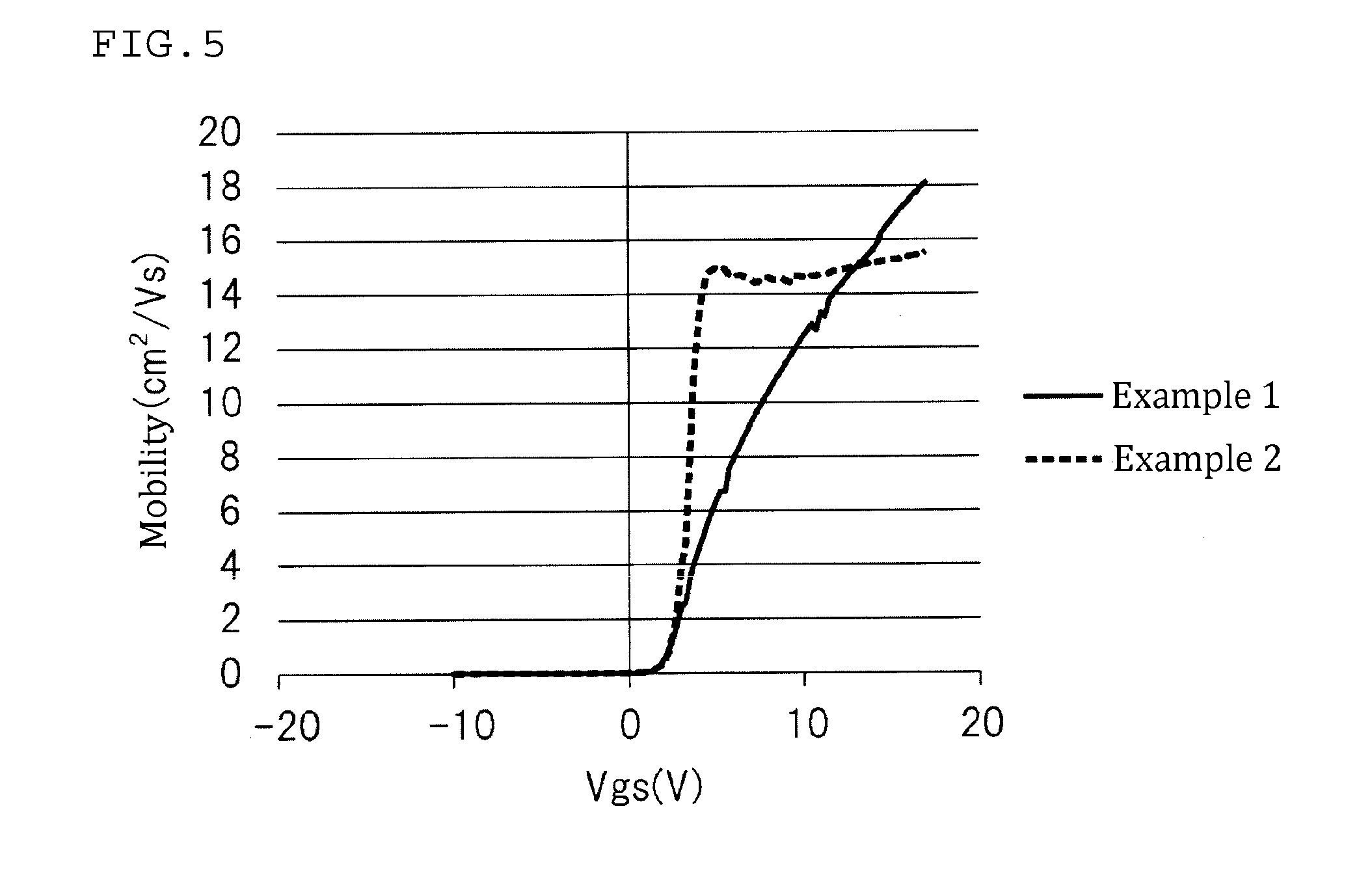Oxide sintered body, method for producing same and sputtering target
a technology of sputtering target and oxidized body, which is applied in the direction of basic electric elements, electrical apparatus, metal material coating process, etc., can solve the problems of abnormal discharge or particle generation, and achieve the effects of reducing target resistance, and increasing the mobility of oxide semiconductors
- Summary
- Abstract
- Description
- Claims
- Application Information
AI Technical Summary
Benefits of technology
Problems solved by technology
Method used
Image
Examples
examples
[0096]Hereinbelow, the invention will be explained in more detail with reference to the Examples which should not be construed as limiting the gist of the invention. The invention can be implemented by appropriately modifying within the scope of the invention, and such modifications fall within the scope of the invention.
examples 1 to 15
Production of Sintered Body
[0097]As raw material powders, the following oxide powders were used. The average particle size of the oxide powder was measured by a laser diffraction particle size analyzer SALD-300V (manufactured by Shimadzu Corporation). The median size D50 was employed as an average particle size for the following oxide powders.
[0098]Indium oxide powder: average particle size 0.98 μm
[0099]Gallium oxide powder: average particle size 0.96 μm
[0100]Aluminum oxide powder: average particle size 0.96 μm
[0101]Tin oxide powder: average particle size 0.95 μm
[0102]Samarium oxide powder: average particle size 0.99 μm
[0103]Yttrium oxide powder: average particle size 0.98 μm
[0104]Neodymium oxide powder: average particle size 0.98 μm
[0105]Gadolinium oxide powder: average particle size 0.97 μm
[0106]The above-mentioned oxide powders were weighed such that the oxide weight ratios shown in Tables 1 and 2 were attained. The weighed oxide powders were homogenously and finely pulverized an...
PUM
| Property | Measurement | Unit |
|---|---|---|
| particle size | aaaaa | aaaaa |
| crystallization temperature | aaaaa | aaaaa |
| particle size | aaaaa | aaaaa |
Abstract
Description
Claims
Application Information
 Login to View More
Login to View More - R&D
- Intellectual Property
- Life Sciences
- Materials
- Tech Scout
- Unparalleled Data Quality
- Higher Quality Content
- 60% Fewer Hallucinations
Browse by: Latest US Patents, China's latest patents, Technical Efficacy Thesaurus, Application Domain, Technology Topic, Popular Technical Reports.
© 2025 PatSnap. All rights reserved.Legal|Privacy policy|Modern Slavery Act Transparency Statement|Sitemap|About US| Contact US: help@patsnap.com



